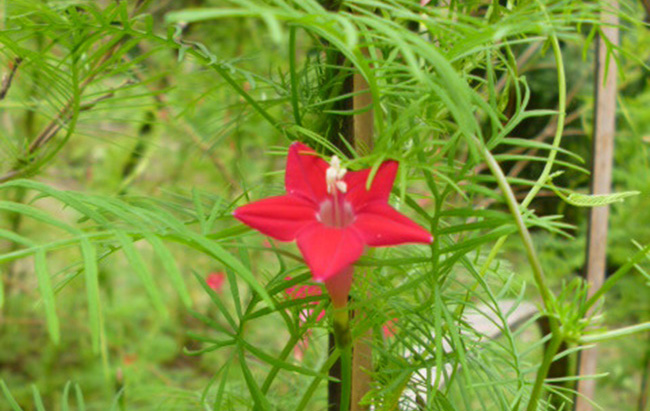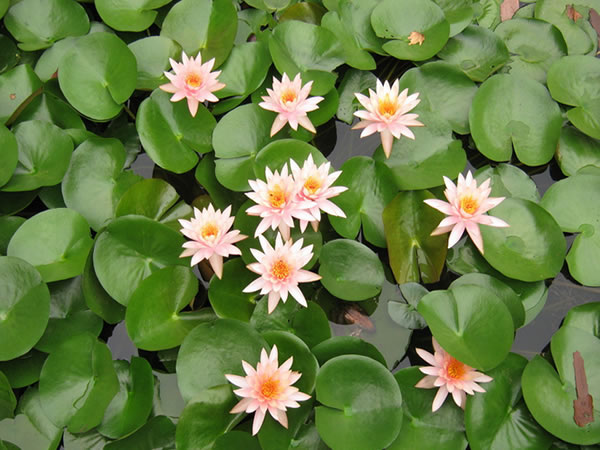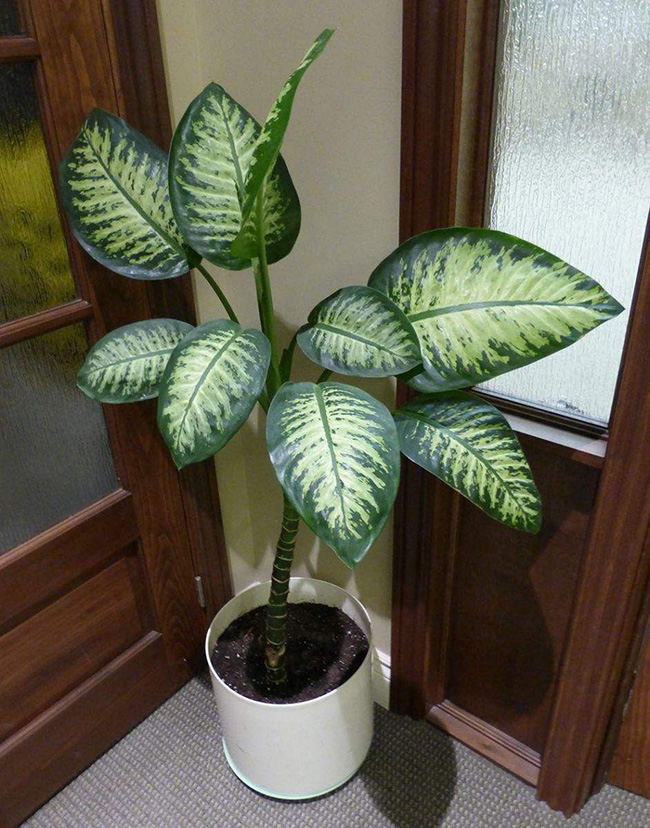Culture methods and pest control of orange red pineapple
Red Morning Glory
Orange red pineapple (Latin name: Quamoclitcoccinea (L.) Moench) is an annual twining herb of the family Convolvulaceae. Leaves cordate, Cymes axillary, flowers orange-red, throat yellowish, capsule ovoid. Orange red pineapple originated in South America, avoid cold, like the sunny environment, the requirements of sunshine hours are not strict.
Orange red pineapple is an excellent green plant in courtyard flower rack, flower window, flower door, flower hedge and flower wall. it can also be used as medicine and has the effect of clearing away heat and reducing swelling.

Morphological characteristics of orange red pineapple
Herbs annual, stems twining, smooth, glabrous. Leaves cordate, 3-5cm long, 2.5-4cm wide, cuspidate, entire, or margin polygonal, or sometimes polygonal, veins palmate; petiole slender, almost as long as leaf blade.
Cymes axillary, with 3-6 flowers, total pedicel slender, longer than petiole, with 2 bracts, petiole ca. 1cm, bracteoles 2; sepals 5, unequal, ovate-oblong, obtuse, with long awn tip, awn linear, long 2mm, inserted slightly below the tip of sepals; Corolla saucer-shaped, orange-red, throat yellowish, as long as 8-25mm, tube slender, suddenly spreading at throat, limb 5-parted Stamens 5, exserted outside Corolla, slightly unequal, filaments filiform, base swollen, with small scaly hairs, anthers small; pistil slightly longer than stamens; ovary 4-loculed, 1 ovule per locule; style filiform, stigma capitate, 2-lobed.
Capsule small, globose, ca. 5mm, seeds 1-4, ovoid, or globose
Growing environment of orange red pineapple
Orange red pineapple likes to be warm, avoid cold and fear frost. It grows very slowly when the temperature is low, and the suitable temperature for seed germination is 20-25 ℃. A sunny environment is required, but the requirement of sunshine hours is not strict.
Distribution range of orange red pineapple
Orange red pineapple is native to South America and is often cultivated in gardens all over China (such as Shaanxi, Hebei, Jiangsu, Fujian, Hubei, Yunnan).
The main value of orange red pineapple
Ornamental value
Pineapple grows straight up and is used to green environments with backgrounds, such as scaffolding, fences, trees, or in front of houses. Can also be potted, put on the balcony traction climbing, modeling into a small flower rack. It can also be used as ground cover flowers to cover the ground and cover indecent things.
Medicinal value
Pineapple is a good medicine for heat-clearing and detoxification, its whole herb or root is used in medicine, the drug is called Jinfengmao, which can treat dysentery, intestinal wind blood, bleeding, hemorrhoids, hematochezia and other diseases.
Propagation method of orange red pineapple
Sowing method
Generally live in the open field in early spring and April, when the seedling height is 10 cm, the seedlings are planted under the courtyard fence or on both sides of the scaffolding, sparsely hanging string for its winding. If you live in a building, you can sow seeds in a shallow basin.
Cutting method
It is often used for softwood cuttings in late spring and early autumn, or old branches in early spring. When the tender wood cuttings were carried out, the sturdy branches of the current year were selected as cuttings when the plants were growing vigorously from the end of spring to early autumn. After cutting off the branches, select the sturdy parts and cut them into 5-15cm long segments, each with more than 3 leaf nodes. When cutting cuttings, it should be noted that the upper cut is flat from the upper leaf saving 1cm, the lower cutting mouth is oblique from the lowest saving 0.5cm, and the upper and lower cutting mouth should be flat (knife should be sharp). When hardwood cuttings are carried out, after the temperature rises in early spring, strong branches in the first year are selected as cuttings. Each cuttage usually retains 3-4 nodes, and the cutting method is the same as that of softwood cuttings. After cutting, cover 50% of the sunshade net. After the roots grow, remove the sunshade net at 4:00 every sunny day, and cover it before 9:00 the next day. The optimum temperature for rooting is 20-30 ℃, and the air relative humidity is 75% 85%.
Strip pressing method
Select a robust branch and peel off the bark from about 15-30cm below the top. The width of the peeled wound is about 1cm, and the depth is limited to just peeling off the skin. Cut a piece of film with a length of 10-20cm and a width of 5-8cm, put some wet garden soil on it, and wrap it up like a wound. The upper and lower ends of the film are tightly tied and bulged in the middle. It takes root after about 4-6 weeks. After taking root, cut off the root system along the edge of the branch to form a new plant.
Cultivation techniques of orange red pineapple
Upper basin
When the seedlings are installed in the pot or the large plants that have been raised for several years are transferred to the basin, a coarse-grained substrate with a thickness of 2-3cm is put into the bottom of the basin as a filter layer, and a layer of fully mature organic fertilizer is sprinkled on it with a thickness of about 1-2cm, then covered with a thin layer of matrix with a thickness of about 1-2cm, and then put into the plant, and then fill the substrate to avoid root burning.
Pruning
When the plant enters the dormant or semi-dormant period in winter, the branches such as thin, disease and insect, withered and overdense should be cut off. The branches can also be arranged in combination with cuttings.
Change the basin
When the plant grows to a certain size, consider changing a larger pot to allow it to continue to grow vigorously. The culture soil and component ratio for basin change can be selected as follows: vegetable garden soil: slag = 3RU 1; orchard soil: medium coarse river sand: sawdust (slag) = 4RU 2; or one of paddy soil, pond mud and rotten leaf soil.
Temperature and humidity management
Pineapple prefers a slightly humid or dry climate, requiring a relative air temperature of 50% to 70%. Like warm climate, but summer high temperature, muggy (more than 35 ℃, air relative humidity more than 80%) environment is not conducive to its growth; the winter temperature is very strict, when the ambient temperature stops growing below 10 ℃, it can not safely survive the winter under frost.
Fertilizer and water management
For potted plants, in addition to adding organic fertilizer when potting, fertilizer and water management should be carried out properly in the usual maintenance process. In the peak growing season of spring, summer and autumn, fertilizer and water management circulates in the order of "Huabao"-"Huabao"-"Huabao"-clear water, with an interval period of about 1-4 days, shorter in sunny days or high temperatures, and longer or unwatered in rainy days or low temperatures. The main purpose of winter dormancy is to control fertilizer and water. Fertilizer and water management circulates in the order of "Huabao"-clear water-clear water-"Huabao"-clear water-clear water, with an interval of about 3-7 days.
Pest control
When aphids occur sporadically, they can be brushed off gently with a brush dipped in water and killed. When the number of aphids is large, it can be sprayed and controlled. The medicine can be 1000-1500 times of dimethoate or 80% dichlorvos emulsion, 1000 times of 2.5% rotenin or 60 times of tobacco lime water (plus 0.1% washing powder), and so on. At the same time, pay attention to the protection and utilization of natural enemies, the main natural enemies of aphids are discolored ladybug, seven-star ladybug, tortoise ladybug, aphid fly and lacewing and so on. These natural enemies play an important role in inhibiting the occurrence of aphids.
Culture methods of orange red pineapple inventory of propagation methods of orange red pineapple
Orange red pineapple can not only be cultivated in scaffolding, fences, trees, or in front of the house, but also can be cultivated in pots, pulled and climbed on the balcony and shaped into small flower racks. What is the culture method of orange and red pineapple? How do you reproduce?
1. Culture method of orange red pineapple
1. On the basin: when the seedlings are installed in the basin or the large plants that have been raised for several years are transferred to the basin, the coarse-grained matrix with a thickness of 2-3cm is first put into the bottom of the basin as a filter layer, which is sprinkled with a layer of fully mature organic fertilizer with a thickness of about 1-2cm, and then covered with a thin layer of matrix with a thickness of about 1-2cm, and then put into the plant, and then fill the substrate to avoid root burning.
2. Pruning: when the plant enters the dormant or semi-dormant period in winter, the branches such as thin, disease and insect, withered and overdense should be cut off. The branches can also be arranged in combination with cuttings.
3. Change the basin: when the plant grows to a certain size, consider changing a larger basin to allow it to continue to grow vigorously. The culture soil and component ratio for basin change can be selected as follows: vegetable garden soil: slag = 3RU 1; orchard soil: medium coarse river sand: sawdust (slag) = 4RU 2; or one of paddy soil, pond mud and rotten leaf soil.
Temperature: pineapple likes a slightly humid or dry climate, requiring the relative air temperature of the growing environment to be 50% and 70%. Like warm climate, but summer high temperature, muggy (more than 35 ℃, air relative humidity more than 80%) environment is not conducive to its growth; the winter temperature is very strict, when the ambient temperature stops growing below 10 ℃, it can not safely survive the winter under frost.
5. Water and fertilizer: for potted plants, in addition to adding organic fertilizer when potting, fertilizer and water management should be carried out properly in the usual maintenance process. In the growing peak season of spring, summer and autumn, fertilizer and water management circulates according to the order of "Huabao"-"Huabao"-"Huabao"-clear water, with an interval period of about 1-4 days, shorter intervals in sunny days or high temperatures, longer intervals or no watering in rainy days or low temperatures. The main purpose of winter dormancy is to control fertilizer and water. Fertilizer and water management circulates according to the order of "Huabao"-clear water-clear water-"Huabao"-clear water-clear water, and the interval period is about 3-7 days.
6. Pest control: when aphids occur sporadically, they can be brushed off gently with a brush dipped in water and killed. When the number of aphids is large, it can be sprayed and controlled. The medicine can be 1000-1500 times of dimethoate or 80% dichlorvos emulsion, 1000 times of 2.5% rotenin or 60 times of tobacco lime water (plus 0.1% washing powder), and so on.
Second, how to reproduce orange red pineapple
1. Sowing method: generally direct seeding in the open field in early spring and April, when the seedling height is 10 cm, the seedlings are planted under the courtyard fence or on both sides of the scaffolding, sparsely hanging string for its winding. If you live in a building, you can sow seeds in a shallow basin.
2. Cutting method: the branches of the same year are often used for softwood cutting in late spring and early autumn, or the old branches are cut with the branches of the first year in early spring. When the tender wood cuttings were carried out, the sturdy branches of the current year were selected as cuttings when the plants were growing vigorously from the end of spring to early autumn.
Each cuttage usually retains 3 mi 4 nodes, and the cutting method is the same as that of softwood cuttings. After cutting, cover 50% Mui 80% sunshade net, the most suitable temperature for rooting is 20Mui 30 ℃, and the air relative humidity is 75% Mui 85%, in order to facilitate its growth.
3. Striping method: select strong branches and peel off the bark from about 15-30cm below the top. The width of the peeled wound is about 1cm, and the depth is limited to just peeling off the epidermis. Cut a piece of film 10-20cm long and 5-8cm wide and put some wet garden soil on it.
Wrap the part of the ring like a wound, with the upper and lower ends of the film tightly tied and bulged in the middle. About 4Mel took root after 6 weeks. After taking root, cut off the root system along the edge of the branch to form a new plant, which is not commonly used.
The above is the introduction of orange-red pineapple culture methods and orange-red pineapple breeding methods. I hope it will be helpful to you to better cultivate orange-red pineapple.
Control methods of common diseases and insect pests of pineapple, powdery mildew / leaf spot / aphids / beetles
Although pineapple is very tenacious in vitality and has a strong ability to adapt to the environment, in the process of planting, pineapple is sometimes infected with diseases and insect pests because of negligence in management, sudden changes in the environment, and so on. Once the consequences are unimaginable, here the editor will tell you a few common pest control methods to avoid tragedies.
Prevention and control of common diseases and insect pests of pineapple
1. Leaf spot
The main symptoms: pineapple leaves appear black-brown disease spot, the disease spot on the stem and petiole is long strip, the color is brown, at first small but will continue to expand, and finally become irregular, the disease spot will also produce wheel patterns, resulting in leaf withering, yellowing, plant growth weakening.
Prevention and control measures: usually pay attention to pruning to ensure that the density of branches and leaves of pineapple is moderate, increase the ventilation of the environment, and reduce air humidity. After the onset of the disease, it was sprayed with 38% cuproloxil 800-1000 times and 50% topiramate 1000 times.
2. Powdery mildew
Main symptoms: yellow dots appear on pineapple leaves, these dots will gradually expand and develop into round or oval, there will be a white powdery mildew layer on the surface of the disease spot, and usually the lower leaves suffer more seriously. as the leaves are covered with powder, resulting in the lack of photosynthesis, decline will be earlier.
Prevention and control methods: among the common diseases and insect pests of pineapple, powdery mildew is relatively easy to prevent. the law of its incidence is excessive application of nitrogen fertilizer, excessive density of branches and leaves, opaque light, and so on. Avoiding these two situations can well prevent powdery mildew, and when the disease occurs, it is necessary to spray with 1000 times of trimethoprim.
3. Beetles
The beetle is a kind of pest with many kinds. It will eat the root and stem of the pineapple, causing damage to the underground part, especially in the process of reproduction, which is easy to be invaded by the beetle, resulting in a decline in the success rate of reproduction. In addition, it may also harm the leaves, flowers, fruits and so on.
Prevention and control methods: choose good and robust pineapple varieties when planting, usually do a good job of environmental hygiene, ensure that the air humidity is moderate, the temperature is not too high, and let pineapple receive sufficient light at the same time. After the onset of the disease, the beetle can be sprayed with 2500 times of deworming essential oil.
4. Aphids
Aphids are very small, but they reproduce very fast. They are one of the most common pests. They suck juice from pineapple leaves and cause plant malnutrition. Aphids are one of the most troublesome pests in flower culture, but their control methods are relatively mature.
Prevention and control methods: when aphids are small, you can use a brush to gently scrape off the aphids to reduce the harm of aphids to the plant, and then cut off the damaged branches and leaves, and then need to spray drugs to completely eliminate aphids. Commonly used drugs have 40% omethoate emulsion 2000 times, and so on.
- Prev

Culture methods and pest control of red water lilies
Red water lily encyclopedia: is a variety of white water lilies, perennial aquatic herbs; rhizome creeping; leaves papery, suborbicular, 10-25 cm in diameter, deeply curved at base, lobes sharp, nearly parallel or spreading, entire or undulate, leaf margin with shallow triangular teeth, both sides glabrous, with dots; young leaves purplish red
- Next

Culture methods and matters needing attention of Dawangdai powder leaves
Dieffenbachiaamoena, also known as Wang evergreen, giant evergreen, Araceae, Daifen (evergreen), is native to the tropical regions of Brazil, Central and South America. Morphological characteristics of Wangdai powder leaves perennial evergreen herbs
Related
- Fuxing push coffee new agricultural production and marketing class: lack of small-scale processing plants
- Jujube rice field leisure farm deep ploughing Yilan for five years to create a space for organic food and play
- Nongyu Farm-A trial of organic papaya for brave women with advanced technology
- Four points for attention in the prevention and control of diseases and insect pests of edible fungi
- How to add nutrient solution to Edible Fungi
- Is there any good way to control edible fungus mites?
- Open Inoculation Technology of Edible Fungi
- Is there any clever way to use fertilizer for edible fungus in winter?
- What agents are used to kill the pathogens of edible fungi in the mushroom shed?
- Rapid drying of Edible Fungi

